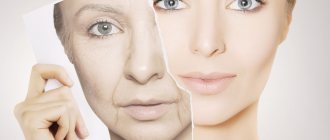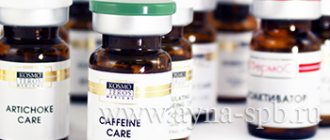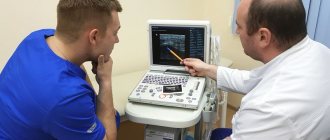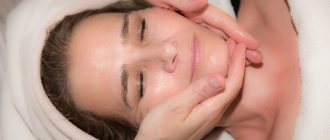Medical Internet conferences
Skin regeneration
Gramkova I.I., Maksimova E.R.
Scientific supervisor: Uvarova I.A., Romanova T.P.
State Budgetary Educational Institution of Higher Professional Education Saratov State Medical University named after V.I. Razumovsky Ministry of Health of Russia
Department of Histology
Regeneration is the restoration of both the structure and function of organs and tissues after damage or loss of a part. Regeneration processes can occur at the very levels of organization of a living system, therefore intracellular regeneration is distinguished; cellular regeneration; tissue regeneration; regeneration at the organ level, it can be physiological and reparative. Physiological regeneration is the regeneration of biological structures after their natural wear and tear during normal functioning. Reparative regeneration - restoration of biological structures after damage (enhanced physiological regeneration). It includes the processes of disintegration of damaged cells, differentiation of cells that have retained viability, their proliferation, secondary differentiation of multiplied cells, establishment of intercellular connections and adaptive restructuring of regenerated cells. When the skin is damaged, a response comes into force that has a neurohumoral regulatory mechanism aimed at restoring the integrity of the skin. The rate of skin regeneration depends on the depth and area of damage, the state of the skin’s immunity and how microcirculation occurs in the vascular bed of the skin. Result of skin regeneration: complete healing; hyperpigmentation; depigmentation; atrophic skin; formation of physiological scars; formation of pathological scars and contractures.
The rate of wound epithelization also depends on the remaining remains of the basement membrane with basal keratinocytes of the epidermis, cells of hair follicles, and sebaceous glands. With superficial damage to the skin without affecting the basement membrane and apexes of the papillae, skin regeneration always occurs without scarring. This is achieved through increased proliferation of basal keratinocytes (scratches, abrasions, second degree burns). When the skin is damaged, affecting the apexes of the papillae, as a result of which the basement membrane and capillaries of the superficial vascular network are damaged, skin regeneration, as a rule, occurs without scarring and occurs due to the preserved fragments of the basement membrane, cells of the hair follicles and the epithelium of the sebaceous glands. With this healing, keratinocytes begin to actively divide and rush to the bottom of the wound, and also move from the edges. First, a single layer of cells is created, and then a multilayer one, under which this skin regeneration process is completed. With lesions at a given depth of the skin, due to the influence of sunlight, hyperpigmentation can form; this is due to the fact that damage to the capillary loops stimulates mast cells to release biologically active substances into the skin (histamine, serotonin), stimulating melanocytes to produce melanin, which then it is absorbed by keratinocytes and gives them a specific dark color. If an infection occurs in the same situation, skin depigmentation or atrophy is possible. When the skin is damaged below the epidermis, at the border of the papillary and reticular layers of the dermis, skin regeneration almost always occurs with the formation of a scar (III degree burns). Scars with such damage can range from normotrophic and atrophic to hypertrophic and keloid. With deep damage to the skin with destruction of underlying tissues, such as subcutaneous fatty tissue, muscles, skin regeneration occurs with the formation of deforming scars.
Just 20 years ago it was believed
That the skin begins to age closer to 40 years (later this bar was moved to 30). The appearance of wrinkles was predominantly considered to be aging. Accordingly, anti-aging cosmetics fought against wrinkles, and one should start using them closer to the above-mentioned age. At the end of the 20th century, researchers did not yet have the amount of medical and biological scientific knowledge that is available today about the structure and functioning of the skin, the characteristics of its vital activity in different age groups, the influence of external factors on skin aging, oxidative stress and its causes, intracellular adaptation mechanisms and reparation, quality and intensity of intercellular interaction.
Research in numbers
- The collagen content in the dermis , which is necessary to ensure the strength of the skin, drops by 1% every year after 30 years.
- After age 40, skin thins by 1% annually.
- restores 10-100 thousand within 24 hours , and 2 hours of exposure to the sun provides up to 1 million mutations .
- 15 minutes of exposure to the sun depletes the skin's own reserves of antioxidants (primarily vitamin C and E) by 70-90% , which requires at least 2 hours to recover.
- Of all the protein that is synthesized in the cell , 40% is produced with errors - the uninterrupted operation of cellular mechanisms for its utilization and processing is required.
- In total, the body contains about 15 g of hyaluronic acid , and of this, 10 g is in the skin . Complete renewal of all hyaluronic acid occurs in the body within three(!) days - any failure in the functioning of skin cells in the synthesis of hyaluronic acid results in a microdisaster for the skin...
Human hair
10. The average person has 100,000 hairs on their head
. People with blond hair have about 140,000 hairs, dark-haired people have 110,000, and red-haired people have about 90,000.
11. Each hair has a small muscle that lifts the hair in cold and various emotional states
12. Body hair grows from 2 to 6 years
13. We lose between 20 and 100 hairs per day.
Bacteria on the skin
20. The skin produces about 500 ml of sweat per day
.
21. Sweat itself has no odor, and it is thanks to bacteria that body odor appears.
22. Your skin is a microcosm in which more than 1000 species of bacteria and about 1 billion individual bacteria
.
23. The glands that produce earwax are special sweat glands.
14 types of fungus living between your toes.
.
In total, over 300 theories have been put forward,
Describing the mechanisms of aging. They can be divided into two large groups - aging based on internal (endogenous) and external (exogenous) factors. Endogenous aging is determined by information encoded in our DNA - there is no way to influence this aspect yet. Exogenous aging is the result of the cumulative and accumulating impact of aggressive environmental factors, including ultraviolet and infrared radiation, ozone from urban smog, cigarette smoke, etc. A tangible impetus to the study of the aging effects of external factors was noted at the turn of the 20th and 21st centuries. Nowadays, no one doubts the fact that external factors determine 60-80% of the total amount of aging (data for facial skin). Ultraviolet light is considered the most dangerous.
Moles and freckles
39. Most moles are genetically predetermined even before we are born.
40. People with more moles on their body live longer and look younger
those who have fewer moles.
41. Almost every person has at least one mole.
42. Moles can appear anywhere
, including the genitals, scalp and tongue.
43. Freckles most often appear in people with light skin color.
44. Freckles fade in winter
, since melanin is not produced in large quantities during the winter months.
45. Freckles can be red, yellow, light brown and dark brown.
46. Unlike moles, freckles do not appear at birth.
, they appear after a person has been exposed to sunlight.
The structure of human skin
1. Skin is the largest organ in the human body
2. If you stretch the skin of an average person, it will cover an area of 2 square meters
3. Skin makes up about 15 percent of your body weight
.
4. There are two types of skin: hairy and hairless
5. Your skin has three layers
:
-epidermis – water-repellent and dead layer
-dermis – hair and sweat glands
-subcutaneous fat – fat and large blood vessels
6. Every inch of your skin has a certain elasticity and strength, depending on its location. So the skin on your knuckles is different from the skin on your stomach.
7. Scar tissue lacks hair and sweat glands
8. The thinnest skin
on your eyelids - about 0.2 mm
9. The thickest skin
on your feet - about 1.4 mm
Appearance of human skin
36.The appearance and texture of your skin speaks volumes about your health.
. When you are sick, your skin turns pale, and when you are tired, bags appear under your eyes.
37. Smoking negatively affects the condition of the skin, depriving it of oxygen and nutrients, slowing blood flow, and also contributing to the appearance of wrinkles.
38.Skin heals very quickly
. Since the top layer of skin is living tissue, the body begins to heal the wound immediately. The blood from the cut forms a scab and seals the wound.
Why does the skin become rough?
Exposure to ultraviolet light and free radicals damages the core and structure of skin cells. The latter lose their ability to regenerate and exfoliate - and horny masses begin to accumulate on the surface. Peels with alpha hydroxy acids (glycolic, malic, citric, tartaric) contained in fruits and berries provide a light exfoliating effect and remove dead skin cells. Novitskaya recommends having exfoliating products with fruit acids at home, and also doing professional peeling in salons from time to time. Sona Kocharova adds that hormonal imbalances, viral diseases and allergies can also provoke increased keratinization of the skin, so if the above appears too suddenly, it is better to first undergo a medical examination.
Photos: Degimages – stock.adobe.com, pimonpim – stock.adobe.com, Deyan Georgiev – stock.adobe.com











